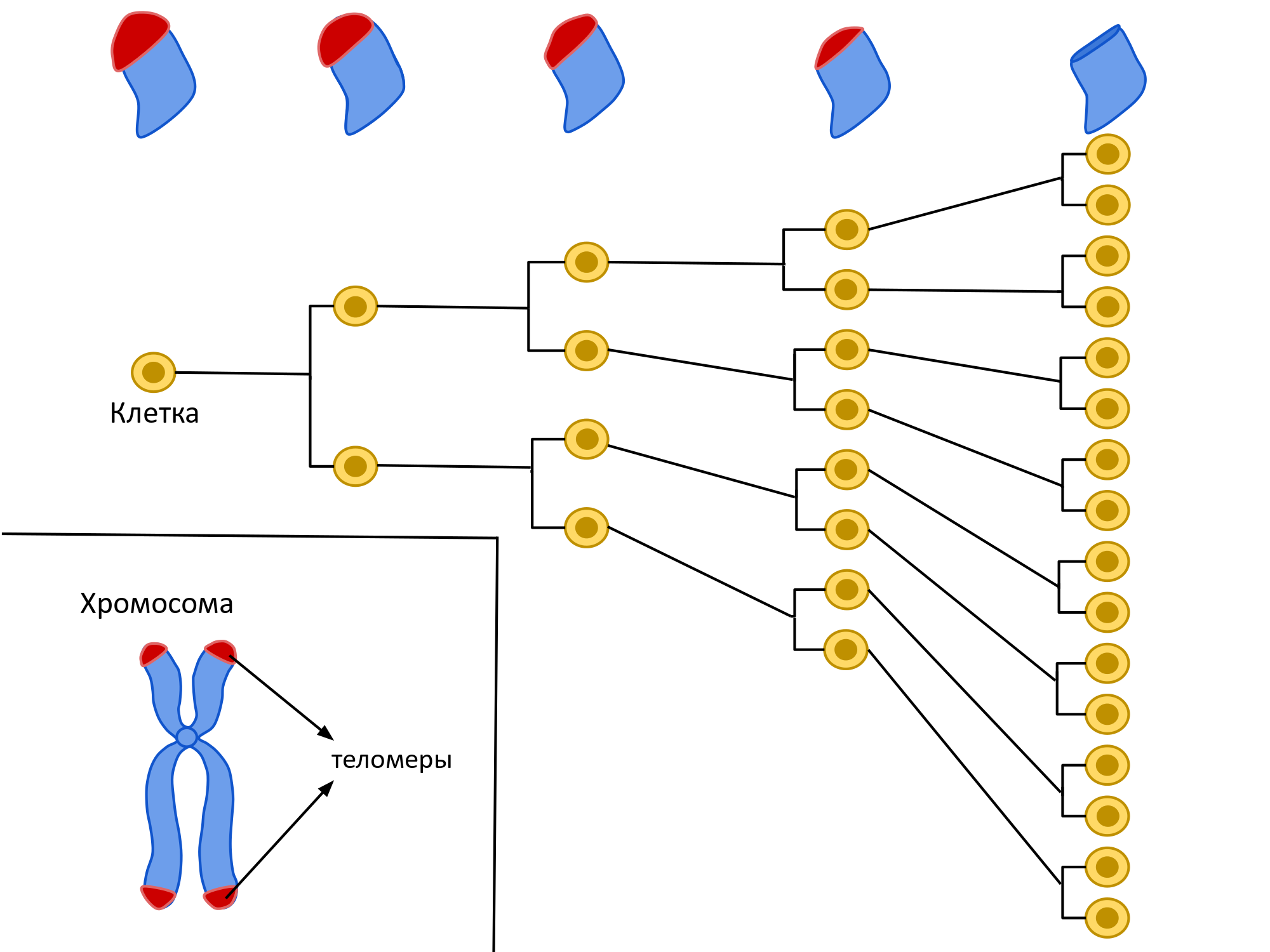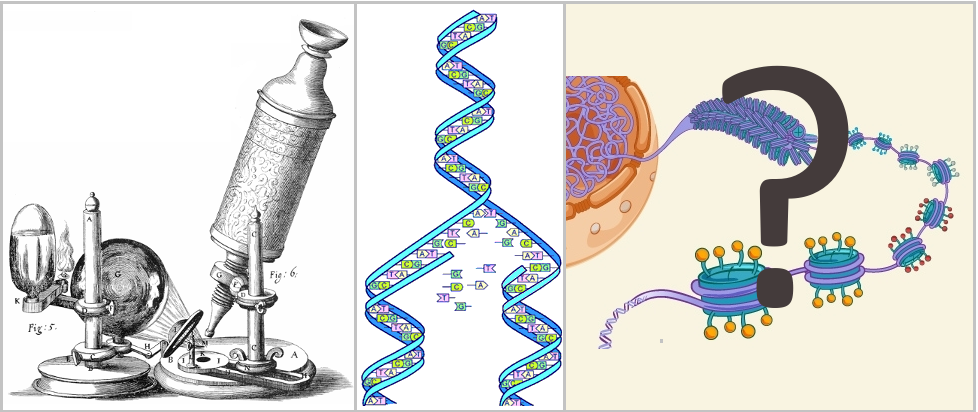Live longer or slower to grow old: a technological approach to old age
Aging affects every person in the world - without exception. At the same time, modern science is still rather poorly aware of the mechanism of aging itself, and still cannot clearly answer even the simple question: what exactly does a person die from, from “old age” as such, or from age-related diseases?

Traditional biology with genetics, the giants of the pharmacological industry, technological innovation visionaries and socially-oriented startups who are trying to improve the quality of life of an aging population are approaching the problem of aging from different angles. Some theories and approaches, as well as where to go with their solutions to the social problems associated with the aging, will be discussed today.
Today, there are a number of theories in the asset of scientists, which mainly study only certain aspects of aging, are looking for some private mechanism that would explain it. Approaches to an integrated and systematic understanding of this process are still ahead.
')
The most popular theory several decades ago states that aging occurs due to the accumulation of damage in cells caused by reactive oxygen species (ROS) - the so-called free radicals. This is a byproduct of normal cellular metabolism, but over time, ROS accumulate, begin to massively damage cells and provoke mutations.

Naked Digger (Photo: National Geographic Creative / Alamy Stock)
Nowadays, this theory is refuted by a number of experimental observations on birds and small rodents - it turned out that the life expectancy of related species with the same level of ROS production differs by orders of magnitude. Most of all, the naked digger ( Heterocephalus glaber ) was distinguished - a small rodent of the family of diggers who lives on orders longer than all other known rodents of comparable size (one individual lived in captivity for more than 30 years). At the same time, the risk of mortality over the years does not increase in any way , unlike all other mammals.
This theory deals with telomeres - the end sections of chromosomes, which are shortened with each cell division. This is due to the fact that DNA polymerase (an enzyme involved in DNA replication) cannot synthesize a DNA copy from the very end, but must add nucleotides to an already existing hydroxyl group. This phenomenon was first observed in the early 1960s by Leonard Hayflick, a professor of microbiology and anatomy at the University of California at San Francisco, after whom he called the Hayflick limit , the maximum number of divisions that a single cell can survive defined in 52 divisions).

Original image: Azmistowski17 wiki user (CC BY-SA 4.0 license)
But she did not survive the test of time. In the past two decades, biologists have observed the reverse process in the body of some seabirds, when telomeres, on the contrary, become longer with age.
Epigenetics is a fairly new branch in science that studies inherited changes in the function of genes. The term was first proposed in the middle of the 20th century, but the modern definition of epigenetics was formulated almost nowadays, in the 1990s, at the suggestion of the American geneticist Arthur Riggs.
The genome is stored in the nucleus of every cell in the DNA molecule - an identical hereditary program that does not change throughout life and is not affected by any external factors. How, then, do these cells form completely different in their structure, functions, and processes in them (from which, in turn, various tissues and organs grow)? Cells of different types activate different parts of the genome, in the process of division they change the activity of individual genes. And this process is regulated by additional factors, a separate “control program”, which is also recorded in the genome - this is the epigenome.
World science is just beginning to engage in a serious systematic study of the epigenome — in 2007, the first publication was published as part of the American national Epigenome Program , and three years later the International Human Epigenome Consortium ( IHEC ) was founded, bringing together research projects in several countries.

Some aspects of epigenetic changes, such as DNA methylation or histone modifications , have already been studied in relatively detail; many other biologists have yet to understand. But it is already clear that the epigenetic processes most closely correlate with age-related changes in the body, and most likely it is precisely in them that the key to obtaining an accurate, complete and consistent theory of aging at the cellular level is hidden. There is every reason to believe that the complete mapping of human epigenome will be for modern science the same significant breakthrough as the discovery of the cell by Robert Hooke in the XVII century and the complete decoding of human DNA in 2003.
In opposition with other scientific theories, there is the original approach of the British gerontologist Aubrey de Gray, co-founder of the Methuselah Foundation , as well as the 2009 SENS Research Foundation, budding from it. Di Gray is convinced that there is no natural program of aging in the human body at all, and all problems arise only because of the imperfection of the natural mechanisms of "anti-aging". He has developed a complex of negligible aging engineering strategies ( SENS ), therapeutic practices that rejuvenate and regenerate the body through neutralizing cancer mutations, clearing intracellular and intercellular debris, restoring lost cells and destroying malfunctioning cells.
Today, the entire SENS-complex is pure thought experiment, and there is no obvious progress towards practical implementation. And while some biologists and genetics speak skeptically about de Gray's research, he himself managed to enlist the support of highly respected figures, such as futurologist Ray Kurzweil and Peter Thiel, who donated millions of dollars to the development of the SENS Foundation.
If the scientific community is more interested in aging as a biological mechanism, socially-oriented researchers and startups look at this problem from the point of view of maximally long-term improvement of the quality of human life. The term “ lifespan ” in their vocabulary is gradually being replaced by the notion of “ health span ”. In such a paradigm, the goal is to achieve the maximum lengthening of the active and healthy phase of life, when a person has access to all the interesting activities and a reduction in the negative aspects of old age and old age. For example, the term “healthspan” appears in the description of a new biotechnology track launched by YC Combinator earlier this year :
This fall, Philtech Accelerator launches a third stream — for startups that offer scalable technology solutions to the problem of aging. If you or your friends have ideas or a project to solve social, economic and cultural problems related to aging, it's time to apply : there is not much time left until September 27!

Traditional biology with genetics, the giants of the pharmacological industry, technological innovation visionaries and socially-oriented startups who are trying to improve the quality of life of an aging population are approaching the problem of aging from different angles. Some theories and approaches, as well as where to go with their solutions to the social problems associated with the aging, will be discussed today.
"Traditional" scientific theories
Today, there are a number of theories in the asset of scientists, which mainly study only certain aspects of aging, are looking for some private mechanism that would explain it. Approaches to an integrated and systematic understanding of this process are still ahead.
')
Free Radical Theory of Aging
The most popular theory several decades ago states that aging occurs due to the accumulation of damage in cells caused by reactive oxygen species (ROS) - the so-called free radicals. This is a byproduct of normal cellular metabolism, but over time, ROS accumulate, begin to massively damage cells and provoke mutations.

Naked Digger (Photo: National Geographic Creative / Alamy Stock)
Nowadays, this theory is refuted by a number of experimental observations on birds and small rodents - it turned out that the life expectancy of related species with the same level of ROS production differs by orders of magnitude. Most of all, the naked digger ( Heterocephalus glaber ) was distinguished - a small rodent of the family of diggers who lives on orders longer than all other known rodents of comparable size (one individual lived in captivity for more than 30 years). At the same time, the risk of mortality over the years does not increase in any way , unlike all other mammals.
Trailer under-replication
This theory deals with telomeres - the end sections of chromosomes, which are shortened with each cell division. This is due to the fact that DNA polymerase (an enzyme involved in DNA replication) cannot synthesize a DNA copy from the very end, but must add nucleotides to an already existing hydroxyl group. This phenomenon was first observed in the early 1960s by Leonard Hayflick, a professor of microbiology and anatomy at the University of California at San Francisco, after whom he called the Hayflick limit , the maximum number of divisions that a single cell can survive defined in 52 divisions).

Original image: Azmistowski17 wiki user (CC BY-SA 4.0 license)
But she did not survive the test of time. In the past two decades, biologists have observed the reverse process in the body of some seabirds, when telomeres, on the contrary, become longer with age.
Epigenetic theories
Epigenetics is a fairly new branch in science that studies inherited changes in the function of genes. The term was first proposed in the middle of the 20th century, but the modern definition of epigenetics was formulated almost nowadays, in the 1990s, at the suggestion of the American geneticist Arthur Riggs.
The genome is stored in the nucleus of every cell in the DNA molecule - an identical hereditary program that does not change throughout life and is not affected by any external factors. How, then, do these cells form completely different in their structure, functions, and processes in them (from which, in turn, various tissues and organs grow)? Cells of different types activate different parts of the genome, in the process of division they change the activity of individual genes. And this process is regulated by additional factors, a separate “control program”, which is also recorded in the genome - this is the epigenome.
World science is just beginning to engage in a serious systematic study of the epigenome — in 2007, the first publication was published as part of the American national Epigenome Program , and three years later the International Human Epigenome Consortium ( IHEC ) was founded, bringing together research projects in several countries.

Some aspects of epigenetic changes, such as DNA methylation or histone modifications , have already been studied in relatively detail; many other biologists have yet to understand. But it is already clear that the epigenetic processes most closely correlate with age-related changes in the body, and most likely it is precisely in them that the key to obtaining an accurate, complete and consistent theory of aging at the cellular level is hidden. There is every reason to believe that the complete mapping of human epigenome will be for modern science the same significant breakthrough as the discovery of the cell by Robert Hooke in the XVII century and the complete decoding of human DNA in 2003.
Closed studies
Unlike research institutes and government-sponsored programs that disclose the results of all their research and experiments, many private R & D centers work on the problems of aging and age-related diseases behind closed doors. Sometimes the secret laboratories of the “big pharma” meet with the tech industry, and start-ups appear like Calico Californian, which was launched in 2013 with the support and funding of Google.
Calico headquarters without any identifying marks (photo: Google Maps)
Also, the company is investing the bio-pharmaceutical concern AbbVie - in total, already $ 750 million (and plans to add another half a billion in the first quarter of 2019). Calico has not yet produced a single drug or biotech product, and so far only a few scientific articles published by its employees are available for public access.
Futuristic theory
In opposition with other scientific theories, there is the original approach of the British gerontologist Aubrey de Gray, co-founder of the Methuselah Foundation , as well as the 2009 SENS Research Foundation, budding from it. Di Gray is convinced that there is no natural program of aging in the human body at all, and all problems arise only because of the imperfection of the natural mechanisms of "anti-aging". He has developed a complex of negligible aging engineering strategies ( SENS ), therapeutic practices that rejuvenate and regenerate the body through neutralizing cancer mutations, clearing intracellular and intercellular debris, restoring lost cells and destroying malfunctioning cells.
Today, the entire SENS-complex is pure thought experiment, and there is no obvious progress towards practical implementation. And while some biologists and genetics speak skeptically about de Gray's research, he himself managed to enlist the support of highly respected figures, such as futurologist Ray Kurzweil and Peter Thiel, who donated millions of dollars to the development of the SENS Foundation.
Healthy longevity vs. long life
If the scientific community is more interested in aging as a biological mechanism, socially-oriented researchers and startups look at this problem from the point of view of maximally long-term improvement of the quality of human life. The term “ lifespan ” in their vocabulary is gradually being replaced by the notion of “ health span ”. In such a paradigm, the goal is to achieve the maximum lengthening of the active and healthy phase of life, when a person has access to all the interesting activities and a reduction in the negative aspects of old age and old age. For example, the term “healthspan” appears in the description of a new biotechnology track launched by YC Combinator earlier this year :
Y Combinator Bio
“I am pleased to present our new experiment on the financing of biomedical companies in the early stages of development - YC Bio.
Biology is a fairly extensive industry, and the first narrower topic on which we want to focus will be the extension of healthy life and age-related diseases. We believe that now there is a great opportunity to help people maintain their health for much longer; Perhaps this is one of the best ways out of the health crisis.
For some time we financed biological companies, and during that time we began to understand what works and what doesn't. We will try to develop a program based on this experience, and almost certainly something else will change in the process of work.
For YC Bio, we will launch a separate track, as was the case with YC AI, for example. But there are several differences - instead of a standard transaction for YC companies ($ 120,000 with a 7% share), we will offer companies any amount from $ 500,000 to $ 1 million for a share of 10-20%, respectively. We will also help companies find a laboratory (through a partner), open access to a wide range of experts and other special offers.
We have prepared a separate application form in our RFS system for all biological companies that are engaged in aging and prolonging healthy life. But of course, we welcome all other bio startups to apply for the standard YC program. ”- Sam Altman, January 2018
(Thanks to MagisterLudi for the translation)
There may be your project
This fall, Philtech Accelerator launches a third stream — for startups that offer scalable technology solutions to the problem of aging. If you or your friends have ideas or a project to solve social, economic and cultural problems related to aging, it's time to apply : there is not much time left until September 27!
Source: https://habr.com/ru/post/423117/
All Articles
